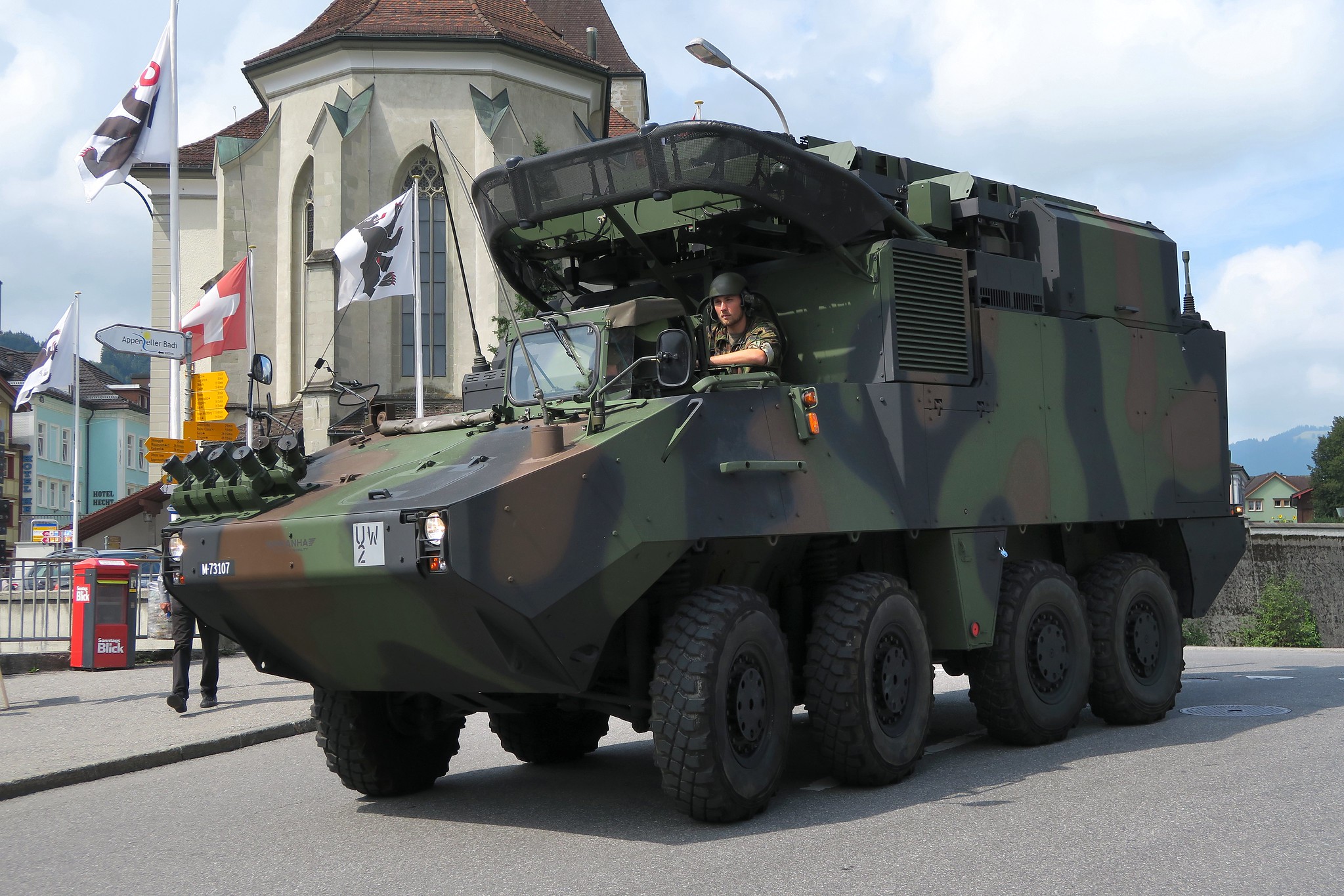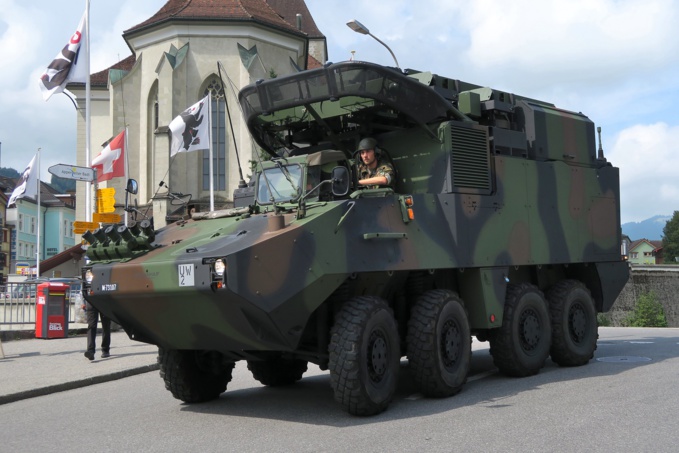Nobody messes with the Swiss
Switzerland is nicknamed the “rooftop of Europe”, and for good reason. The landlocked country shares borders with France, Germany, Austria and Italy, and dominates each one in altitude. Needless to say, it forms the perfect platform for any attack on a surrounding country, and therefore represents an appetizing take for any military commander with pan-European ambitions - there have been many. Strangely, Switzerland has barely ever suffered any invasion, or even any attempt at one. The cliché of stability of the Swiss is not usurped, as their borders have hardly been violated since the 15th century. So, what is it that deters invaders so effectively?
The militia
Switzerland is one of the few Western nations to have maintained not only conscription, but also the militia system. Much like the Israeli, the Swiss accept that any man in military age (starting at 20) carries the responsibility of homeland defense and must attend yearly military training. The Swiss army therefore runs on a core of 120,000 people but can be reinforced by virtually all the rest of the civilian population, at a short moment’s notice. This is any invader’s nightmare. When the US invaded Iraq and Afghanistan, they were quickly deceived from their forecast to encounter large conventional forces and were overwhelmed by the entire population turning against them. The enemy, in Switzerland, would likewise be nowhere, and everywhere. The only difference being that Swiss fighters are extremely well-trained, unlike in insurgent units where training is often sub-ideal.
The National redoubt
The Swiss geographic layout is quite straightforward: a central, east-to-west, populated strip, boxed in between two mountainous ridges - one bordering with Germany, the other with Italy. Should an invasion occur, all populations and armed forces (in many ways, one and the same) will withdraw to the mountainous areas and leave the urban central section of the country to the invader. From there, the enemy will have no one to fight in its location, making his firepower useless, no matter how great it may be. However, enemy forces would then be vulnerable to relentless attacks coming from higher grounds, where the Swiss forces would be. Any attempt to gain higher ground would be made extremely difficult by the uphill terrain, the scattering of fortifications all over the countryside, and incessant enemy fire. If the Swiss can deploy large weapons, such as howitzers, and relocate them constantly, then the task of invasion would be near impossible. The French have developed a high-power ultra-mobile howitzer, named the Caesar, which will presumably be of great interest for Swiss military planners. The Caesar showed outstanding results in Afghanistan, where ability to move freely and quickly send volleys, as would be needed in a Swiss strategy, was a synch for the French howitzer - far above what traditional track-and-armor howitzers could ever do.
The Mohamed Ali approach
Long before the legendary boxer revealed his strategy of “floating like a butterfly and stinging like a bee”, the Swiss had already adopted the military version of it. An invasion is virtually the only military scenario a neutral country like Switzerland must prepare for. In such a context, the invader would be constantly harassed by ultra-mobile forces it could never corner, or even locate.
The Swiss have among the best alpine troops in the world, as this environment is home to them. Mountain warfare is very specific, and most nations in the world provide their troops with only basic training. Should the Swiss alpine infantrymen be pitched against an enemy force, their ability to shoot at long distance and then use the terrain to vanish and evade engagement would expose the enemy to severe rates of attrition. The Sako TRG-22 sniper rifle is in use today and provides a good marksman with the ability to easily hit a man-sized target at 1,000 yards. Extremely few foreign units are able to consistently reach such levels of accuracy, which means they would always be outgunned by Swiss units. Marksmanship is of utmost importance to the Swiss, who regularly train as a sport or tradition.
Artillery units would also be placed in the valleys and behind mountain flanks, to pummel enemy formations. This would enable them to deliver heavy firepower, undetected, and relocate quickly and evade counter-artillery. Mobility is key in this strategy: artillery units are notoriously slow and bulky, and tracked howitzers have much difficulty moving in mountainous areas. The current Swiss howitzer is the American M109. But recent developments in technology may be of interest to the Swiss in the near future, as artillery systems can now be mounted onto ultra-mobile truck platforms, which plays perfectly into the Swiss strategy. For instance, the French Caesar artillery truck showed excellent potential in mountainous Afghanistan and is currently being considered by the US Army. The Americans are considering the Caesar precisely because it can operate better than most howitzers, be it on plains or in mountains. So Nexter’s Caesar would clearly be an addition to the American arsenal - but just an addition. In the Swiss case, the Caesar sounds like the perfect fit, given the country’s ultra-specific needs.
The Swiss do not have the largest army in the world, due to their modest population. They don’t have the largest military budget, either. They are not part of European defense agreements. They have been targeted numerous times for their dominating position in Europe. And yet, no one has dared. The custom-based strategy, designed to swarm any enemy with relentless tactical harassment and systematic evasion, has made Switzerland too expensive a target, no matter how ruthless the wannabe invader. In this regard, the Swiss strategy could serve as inspiration to many other Western nations. In order to implement a strong defense, Switzerland needs only two capacities: ability to fire modern high-precision rounds (to compensate for its small size with a devastating punch) and extreme mobility in mountainous areas, to ensure that its defense strategy is sustainable.
Switzerland is nicknamed the “rooftop of Europe”, and for good reason. The landlocked country shares borders with France, Germany, Austria and Italy, and dominates each one in altitude. Needless to say, it forms the perfect platform for any attack on a surrounding country, and therefore represents an appetizing take for any military commander with pan-European ambitions - there have been many. Strangely, Switzerland has barely ever suffered any invasion, or even any attempt at one. The cliché of stability of the Swiss is not usurped, as their borders have hardly been violated since the 15th century. So, what is it that deters invaders so effectively?
The militia
Switzerland is one of the few Western nations to have maintained not only conscription, but also the militia system. Much like the Israeli, the Swiss accept that any man in military age (starting at 20) carries the responsibility of homeland defense and must attend yearly military training. The Swiss army therefore runs on a core of 120,000 people but can be reinforced by virtually all the rest of the civilian population, at a short moment’s notice. This is any invader’s nightmare. When the US invaded Iraq and Afghanistan, they were quickly deceived from their forecast to encounter large conventional forces and were overwhelmed by the entire population turning against them. The enemy, in Switzerland, would likewise be nowhere, and everywhere. The only difference being that Swiss fighters are extremely well-trained, unlike in insurgent units where training is often sub-ideal.
The National redoubt
The Swiss geographic layout is quite straightforward: a central, east-to-west, populated strip, boxed in between two mountainous ridges - one bordering with Germany, the other with Italy. Should an invasion occur, all populations and armed forces (in many ways, one and the same) will withdraw to the mountainous areas and leave the urban central section of the country to the invader. From there, the enemy will have no one to fight in its location, making his firepower useless, no matter how great it may be. However, enemy forces would then be vulnerable to relentless attacks coming from higher grounds, where the Swiss forces would be. Any attempt to gain higher ground would be made extremely difficult by the uphill terrain, the scattering of fortifications all over the countryside, and incessant enemy fire. If the Swiss can deploy large weapons, such as howitzers, and relocate them constantly, then the task of invasion would be near impossible. The French have developed a high-power ultra-mobile howitzer, named the Caesar, which will presumably be of great interest for Swiss military planners. The Caesar showed outstanding results in Afghanistan, where ability to move freely and quickly send volleys, as would be needed in a Swiss strategy, was a synch for the French howitzer - far above what traditional track-and-armor howitzers could ever do.
The Mohamed Ali approach
Long before the legendary boxer revealed his strategy of “floating like a butterfly and stinging like a bee”, the Swiss had already adopted the military version of it. An invasion is virtually the only military scenario a neutral country like Switzerland must prepare for. In such a context, the invader would be constantly harassed by ultra-mobile forces it could never corner, or even locate.
The Swiss have among the best alpine troops in the world, as this environment is home to them. Mountain warfare is very specific, and most nations in the world provide their troops with only basic training. Should the Swiss alpine infantrymen be pitched against an enemy force, their ability to shoot at long distance and then use the terrain to vanish and evade engagement would expose the enemy to severe rates of attrition. The Sako TRG-22 sniper rifle is in use today and provides a good marksman with the ability to easily hit a man-sized target at 1,000 yards. Extremely few foreign units are able to consistently reach such levels of accuracy, which means they would always be outgunned by Swiss units. Marksmanship is of utmost importance to the Swiss, who regularly train as a sport or tradition.
Artillery units would also be placed in the valleys and behind mountain flanks, to pummel enemy formations. This would enable them to deliver heavy firepower, undetected, and relocate quickly and evade counter-artillery. Mobility is key in this strategy: artillery units are notoriously slow and bulky, and tracked howitzers have much difficulty moving in mountainous areas. The current Swiss howitzer is the American M109. But recent developments in technology may be of interest to the Swiss in the near future, as artillery systems can now be mounted onto ultra-mobile truck platforms, which plays perfectly into the Swiss strategy. For instance, the French Caesar artillery truck showed excellent potential in mountainous Afghanistan and is currently being considered by the US Army. The Americans are considering the Caesar precisely because it can operate better than most howitzers, be it on plains or in mountains. So Nexter’s Caesar would clearly be an addition to the American arsenal - but just an addition. In the Swiss case, the Caesar sounds like the perfect fit, given the country’s ultra-specific needs.
The Swiss do not have the largest army in the world, due to their modest population. They don’t have the largest military budget, either. They are not part of European defense agreements. They have been targeted numerous times for their dominating position in Europe. And yet, no one has dared. The custom-based strategy, designed to swarm any enemy with relentless tactical harassment and systematic evasion, has made Switzerland too expensive a target, no matter how ruthless the wannabe invader. In this regard, the Swiss strategy could serve as inspiration to many other Western nations. In order to implement a strong defense, Switzerland needs only two capacities: ability to fire modern high-precision rounds (to compensate for its small size with a devastating punch) and extreme mobility in mountainous areas, to ensure that its defense strategy is sustainable.



















